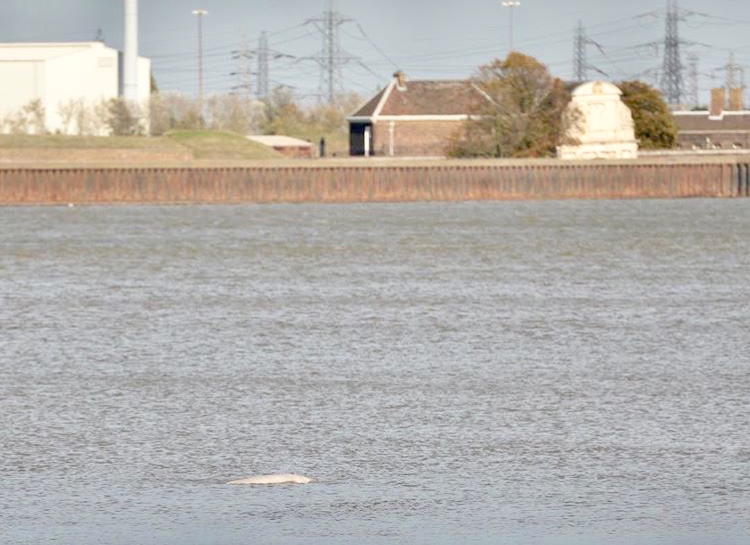The Beluga that visited London
- Harry

- Dec 31, 2020
- 3 min read

Thankfully, not every whale that’s visited the Thames met Hessy the Humpback’s tragic fate. Just a year prior another whale appeared in the River, an extremely rare visitor, from the high Arctic. Somehow, a Beluga Whale had ended up in there, pitching up thousands of miles away from its home.
Belugas are uniquely beautiful whales, probably the only one to be completely unmistakeable, with a striking, bleach white body all over and smooth white back, they’re the Rolexes of watches, the Bearded Vultures of British bird sightings (or Zino's Petrel, depends who's side you're on). Unsurprisingly, in certain areas of the world they’re simply referred to as ‘the White Whale’. They’re so unique that they and the equally as bizarrely beautiful Narwhals have their own designated family, the Monodontidae Family.

When Hessy visited the River Thames, there was a lot of press, but nothing compared to Benny, as he was quickly named. He stuck out in a dark London river like a saw hand, never mind saw thumb. People travelled from as far away as Canada for the chance to catch a once-in-a-lifetime glimpse of a wild, White Whale in Britain. There was even an American news segment about him, and how weird Americans found it that we don’t go whale-watching in Britain like they do.
London quickly made tens of thousands of pounds from Benny, who soon had an Ale named after him, along with postcards, and (interesting…) knitted toys of him. The locals quickly fell in love with him (and the money) and prayed he’d stick around. He’d given the economy a massive boost.
People cared about him so much they even changed their lifestyles. Ships diverted course and Christmas firework displays and celebrations were cancelled singly thanks to Benny.

There wasn’t as much concern for him unlike Hessy. Belugas are seen just as happily in throngs of over 1,000 as solitary, so a lone one wasn’t a worry. He was also less at risk of a boat collision because some altered course for him. The sonar and navigation skills of a Beluga is impeccable too. In the Arctic they’re used to pushing their way through ice fields in Winter and living in rivers as shallow as 1.5m during Summer when they gather to moult, so the Thames didn’t pose much of a problem.
Two more photos of Benny-taken by @sophie.amanda.h
The locals’ prayers must’ve done something, because for months he stuck around, happily hunting shoals of Herring and bottom-dwelling creatures, just like he’d do naturally. The only main worry was that the pollution in the river could work its way up the food chain to him, possibly damaging his health.

But there weren’t any changes in his behaviour to suggest it, he was acting relatively naturally.
Then one morning in late May, several months after arriving, he slipped back off again, last seen heading back down river towards the mouth of the Thames and back out into the open ocean. Leaving behind an army of gutted members of the public, who’d just lost their hundreds of thousands of pounds magnet.
Sadly, as discussed in the previous post, not all whales share Benny’s luck. Whales globally face threats to their lives, almost daily, from hunting to entanglement to Climate Change. The arguably most silent killer are ships. Once a whale dies, their body sinks to the pitch black stomach of the Sea, where no-one will ever see them, so only a tiny percentage of whales killed by ships are recorded (it could be over x2000% the amount logged). If whale bodies floated, they’d be exposed to the public eye, and it wouldn’t be allowed, but sadly they’re largely hidden, and it’s been allowed to continue. In the next post I’ll talk about what you can do to help save them, and how they’re actually saving us.

(P.S. all photos not credited aren't mine, credit goes to Wix/Unsplash's photographers (photos are copyright free). I'm not quite that good with a camera!)








Comments